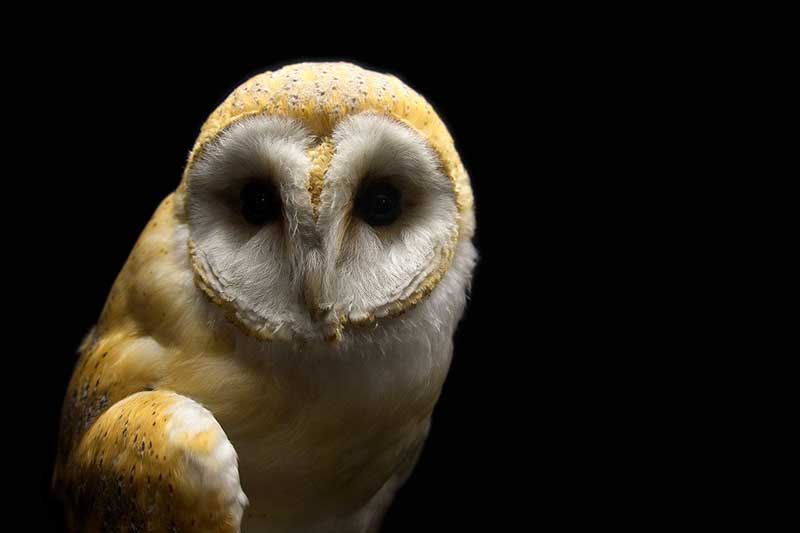Understanding The Night Hunter: Behavior And Ecology Of Nocturnal Predators

Table of Contents
Sensory Adaptations for Nocturnal Hunting
Nocturnal predators have evolved remarkable sensory adaptations to compensate for the limitations of hunting in low-light conditions. These adaptations allow them to effectively locate, track, and capture prey in the dark.
Enhanced Hearing and Smell
Many nocturnal predators possess superior auditory and olfactory systems. Their heightened senses of hearing and smell act as crucial compensations for the reduced visual information available at night.
- Superior Hearing: Owls, for example, have asymmetrical ear placement, which allows them to pinpoint the exact location of even the smallest rustle in the undergrowth. This precise sound localization is a key component of their successful hunting strategies. Their exceptional night vision is further enhanced by this acute hearing.
- Exceptional Smell: Canids, like wolves and foxes, and felines, like lions and tigers, rely heavily on their incredibly sensitive noses. Their keen sense of smell allows them to track prey across vast distances, even in complete darkness. Dogs, for example, demonstrate the impressive power of olfactory-based nocturnal hunting. Their sensitive whiskers further aid in navigating their surroundings.
- Sensory Integration: These nocturnal predators don't rely on just one sense; they integrate multiple sensory inputs to build a complete picture of their surroundings. This integration is a key element of their highly successful nocturnal adaptation. The interplay of hearing, smell, and even subtle vibrations sensed through the ground are used to locate and identify prey. This complex sensory perception is a defining characteristic of successful nocturnal predators.
Specialized Vision
While vision is often reduced compared to diurnal animals, nocturnal predators have developed specialized adaptations for low-light vision.
- Tapetum Lucidum: Many nocturnal animals, including cats, dogs, and many other mammals, possess a tapetum lucidum, a reflective layer behind the retina. This layer reflects light back through the retina, amplifying the available light and improving night vision. This results in the characteristic "eye shine" visible in many nocturnal animals' eyes when illuminated at night.
- Rod Cells: Nocturnal predators have a higher concentration of rod cells in their retinas compared to cone cells. Rod cells are responsible for vision in low light, while cone cells are responsible for color vision. This adaptation prioritizes sensitivity to light over color perception.
- Varied Visual Acuity: While all nocturnal predators benefit from increased light sensitivity, their visual acuity varies greatly depending on the species and their hunting strategies. Owls, for example, possess exceptional visual acuity, enabling them to spot small prey from considerable distances. Cats, on the other hand, have excellent night vision but slightly less acuity in comparison.
Hunting Strategies and Prey Selection
Nocturnal predators employ a range of sophisticated hunting strategies tailored to their environment and prey.
Stealth and Ambush
Stealth and ambush are cornerstone strategies for many nocturnal predators. The darkness provides cover, allowing them to approach their prey undetected.
- Silent Movement: The padded paws of cats, for instance, allow for almost silent movement, crucial for successful ambush predation.
- Camouflage: Many nocturnal animals utilize camouflage to blend seamlessly with their surroundings, further enhancing their ability to ambush their prey. Their coat color and patterns often perfectly match their environment, providing effective concealment.
- Ambush Techniques: Nocturnal hunters utilize a variety of ambush techniques, ranging from patiently waiting in hidden locations to actively stalking their prey before launching a sudden attack.
Prey Selection and Diet
The diet of nocturnal predators is strongly influenced by the availability of prey within their specific habitats.
- Predator-Prey Dynamics: The relationship between predator and prey is a constant dynamic, with predator populations influenced by prey availability and vice versa. Fluctuations in prey populations can significantly impact the success and survival of nocturnal predators.
- Dietary Specialization: Some nocturnal predators are highly specialized in their diet, targeting specific prey species. Others are more generalist, consuming a broader range of prey depending on what is available.
- Impact on Prey Populations: Nocturnal predators play a critical role in regulating prey populations, preventing overgrazing and maintaining the balance of the ecosystem. Their presence ensures healthy competition and prevents dominance by single species. This is a significant contributor to the overall health of the ecosystem.
Ecological Roles and Conservation
Nocturnal predators are integral components of their ecosystems, contributing significantly to their health and biodiversity.
Maintaining Ecosystem Balance
Nocturnal predators play a crucial role in maintaining ecosystem balance.
- Population Control: By preying on herbivores, they help prevent overgrazing, which can lead to habitat degradation. This is a crucial role in maintaining healthy plant populations.
- Biodiversity: Their presence contributes to overall biodiversity by preventing any single species from becoming overly dominant. They keep the ecosystem dynamic and rich in diversity.
- Nutrient Cycling: Their role in the food chain ensures the efficient cycling of nutrients through the ecosystem. They act as a vital link in the complex web of life.
Threats and Conservation Efforts
Unfortunately, many nocturnal predator populations are facing significant threats.
- Habitat Loss: Human development and habitat fragmentation are major threats, reducing the amount of suitable habitat available for these animals.
- Human Conflict: Direct conflict with humans, including persecution and retaliatory killings, poses a considerable risk to some species.
- Pollution: Pollution, including pesticides and other toxins, can negatively affect the health of nocturnal predators, leading to population declines.
- Conservation Initiatives: Various conservation strategies, including habitat protection, anti-poaching efforts, and public awareness campaigns, are crucial for safeguarding these vital animals and their habitats. Dedicated efforts to protect endangered species of nocturnal predators are vital.
Conclusion:
The world of nocturnal predators is a rich tapestry of fascinating adaptations and intricate ecological relationships. Understanding these "night hunters," their unique sensory adaptations, hunting strategies, and vital roles in their ecosystems, is crucial for effective conservation. By appreciating the importance of nocturnal predators, we can better protect these vital components of our planet's biodiversity. Continue learning about the diverse world of nocturnal predators and their crucial contribution to a healthy planet. Further explore the unique challenges and triumphs of these amazing creatures, and actively support conservation efforts to protect their future.

Featured Posts
-
 Rencontre Inattendue Sylvester Stallone Decouvre Mon Travail
May 12, 2025
Rencontre Inattendue Sylvester Stallone Decouvre Mon Travail
May 12, 2025 -
 Manon Fiorot Her Pursuit Of The Ufc Championship
May 12, 2025
Manon Fiorot Her Pursuit Of The Ufc Championship
May 12, 2025 -
 Ufc 315 Full Main Card Announced Belal Muhammad Vs Jack Della Maddalena Headlines
May 12, 2025
Ufc 315 Full Main Card Announced Belal Muhammad Vs Jack Della Maddalena Headlines
May 12, 2025 -
 Crazy Rich Asians Henry Golding Updates On Cast Reunions And Potential Tv Show
May 12, 2025
Crazy Rich Asians Henry Golding Updates On Cast Reunions And Potential Tv Show
May 12, 2025 -
 Astronauts Nine Month Space Stay Cbs News Report
May 12, 2025
Astronauts Nine Month Space Stay Cbs News Report
May 12, 2025
